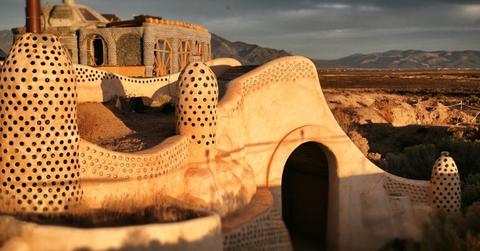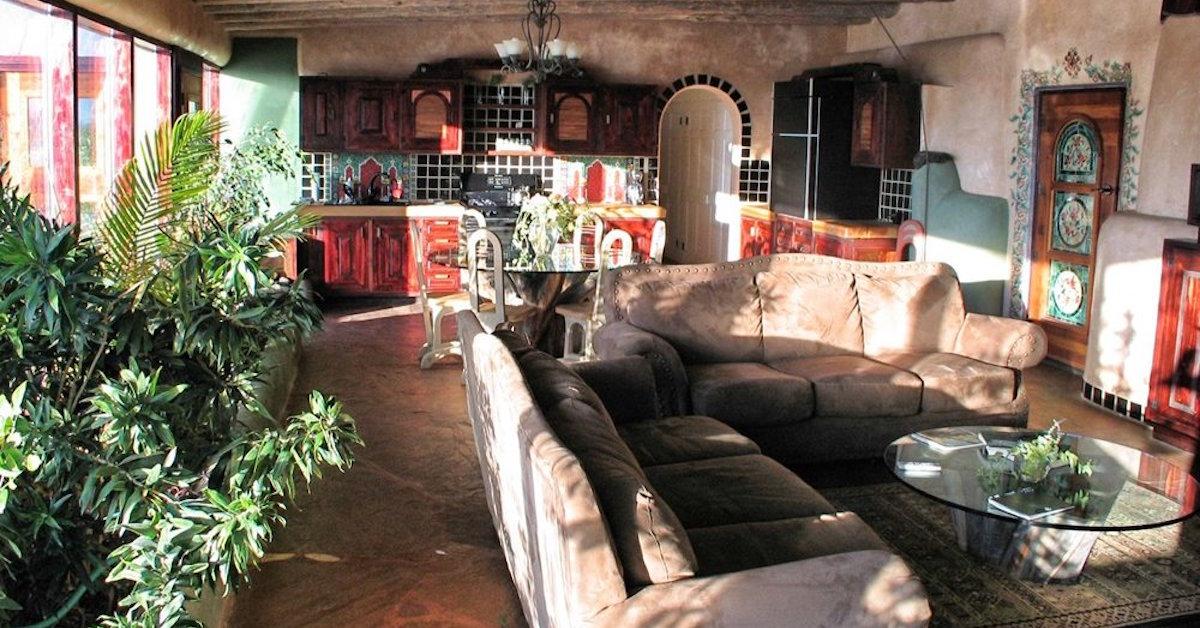How Earthships Are Changing the Face of Sustainable Living
Published March 19 2021, 4:46 p.m. ET
When you hear the name Earthships, your mind probably conjures some sort of UFO-shaped mechanical transport. That might sound silly, but in many ways, it’s not entirely incorrect, either. These remarkable, solar-powered innovations are said to be the sustainable home of the future. But what are Earthships, how are they eco-friendly, and how are they poised to change the way that people live for the better?
What is an Earthship?
Earthships are a type of sustainable home, constructed with recycled or natural building materials, and designed to be self-sustainable for those who live in them. They are powered by renewable sources like wind and solar power, collect their own drinking water, treat their own sewage, and often, grow their own food. Earthships are generally built off the grid in remote places, and there are around 3,000 fully-built Earthships in the world today, though most are located in the U.S.
You don't have to live in an Earthship to appreciate it either. People can visit and stay in one by contacting the Earthship Global Visitor Center in New Mexico. Earthships are the brainchild of New Mexican architect Michael Reynolds. According to Britannica, Reynold’s design principles for sustainable housing were first conjured during the energy crisis of the 1970s. He wanted to create eco-friendly houses that both supported modern living and did not draw on any nonrenewable resources.
How are Earthships sustainable?
According to Britannica, Earthships feature such sustainable features as renewable energy sources to generate energy for heating and cooling, and cisterns to catch rainwater. Water organization modules are usually added to purify drinking water and transport wastewater. Earthships are equipped to run on solar, wind, or biodiesel and can be made of recycled material. The basic structure of these green homes is made from glass, aluminum cans or bottles, adobe, dirt, recycled tires, or plaster.
These materials are used for specific purposes and in specific locations within the Earthship. For example, outer walls are often made of two rows of the recycled aluminum and separated by an air space. This keeps the outer walls insulated. Further insulation is provided by inner walls made of tires filled with dirt. The natural location of the Earthships themselves, which are often built directly into hillsides, aids in insulation as well, according to Britannica.
Though most Earthships are built below the frost line, those in the Northern Hemisphere are southern-facing, so as to absorb the maximum amount of heat. Many are also covered or decorated with natural foliage, which benefits from the excess wastewater and helps provide natural oxygenation indoors.
What are the advantages of Earthships?
Due to the inherent sustainability of the designs themselves, Earthships provide many advantages for those looking to live more sustainable or zero-waste lives. Earthships offer a rare opportunity to utilize only eco-friendly means of generating electricity such as solar panels, wind turbines, and biodiesel generators. They take advantage of the climate, the sun, and the terrain in order to generate natural heat and cooling.
Their use of recycled and natural products as building materials means that they don’t need to put any additional strain on non-renewable resources. These resources, specifically rubber tires, make for wind and puncture-resistant walls, according to Environment and Ecology. Utility bills, water bills, and other such spending is severely minimized after making an initial investment on an Earthship home.
On top of all that, since the designs are mostly customizable, homeowners are able to make informed decisions about how much rain they want to catch, how many plants they wish to grow, what renewable energy they would like to take advantage of, and ultimately, how they want their house to look.
What are the disadvantages of Earthships?
Disadvantages are essentially the same as those attached to most sustainable homes. First, according to Environment and Ecology, the resale value of these homes will probably not be great. This is because Earthships are mostly custom-built in areas of low population density. This makes them both difficult to get to and difficult to build. The outside of these buildings has also been known to present some problems in terms of water-tightness and leakage.
Insulation problems have also arisen, and neither these nor the leakage issues have yet to be fully reconciled. Earthships are generally built small, so obviously, the lack of living space might be an issue for some people. Then again, those people would probably not be looking to live in an Earthship in the first place.
Regardless of their flaws, the concepts behind the Earthship’s design are still sound. New innovations in sustainable housing materials, renewable energy, and eco-friendly design will only improve on existing designs. That means that the Earthship of tomorrow will not only be much more livable, it will likely be even more sustainable.

